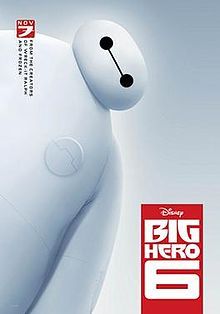Beiwel: We need more depiction of realistic men in children’s movies

Big Hero 6
March 11, 2016
Over the past few years, a greater influence has been placed on providing good role models for young girls. In real life, singers and actresses have been lauded and condemned for the impact they may have on the impressionable teens and girls who look up to them.
Miley Cyrus, Nicki Minaj and the Kardashians are often at the top of the list of “bad” role models for children because of their over-sexualized images, their disregard for rules and norms, and in the case of Minaj and Cyrus, their explicit lyrical content. Many parents think these three women have been sending the wrong type of message to their impressionable young girls.
This need for role models has stretched to the animated world in movies such as Disney’s “Tangled,” “Frozen” and “Brave.” All three movies have strong female characters who work to help themselves rather than relying on the stereotypical male savior.
It’s good that we’re moving away from old beliefs to imbue girls with confidence and self-assurance. We tell them they’re beautiful no matter what and that they should feel comfortable in their skin. They should no longer be fettered by old social conventions.
And that’s fantastic.
But what about young boys?
Disney movies, as much as I love them, can send some terrible messages to boys. They have to be buff and they have to want marriage. As fathers, they will be lacking or absent and they have to display strength and confidence in all their activities. If they don’t, they will be seen as less of a man.
It’s too much to ask of anyone, particularly impressionable young minds. They should see themselves as heroes, but there’s no way to measure up completely.
Studies show that boys’ self-esteem suffers much to the same degree as girls. Boys may try to mask their insecurities with “swagger,” but many report feeling frustrated or angered by their expectations.
The tide is changing, I believe, but there is so much emphasis on increasing the self-confidence of young women, and the same bolstering that young men need is often ignored.
My favorite subversion of this is the 2014 Disney movie “Big Hero 6.” The film follows a 14-year-old boy named Hiro, who bonds with a robot that is designed to be a medical unit. This robot, Baymax, was created by his older brother Tadashi, who (spoiler) dies in the first half of the movie.
The film is unique in the way that it not only acknowledges Hiro’s grief but also addresses it. He is weakened by his pain, and those around him don’t think less of him for it. Hiro cries. Disney showed a grieving young boy who is vulnerable after a loss. Hiro grows. He acknowledges how he feels without being mocked or told to get over it, and he learns to accept the loss.
Boys are many times told to appear infallible. They must be strong and unwavering. If we instill a fear of emotions in young men and boys, they’ll grow up being unable to deal with them.
We don’t need to change what it means to be a man. We need to acknowledge the humanity of our younger generations of men. Boys don’t grow out of their emotions any more than women do.
Children grow up watching cartoons and animated movies. Some of our first interpretations of adult relationships come from the depictions in easy-to-swallow animated films. These films are increasingly being altered to show positive depictions of young women, who are not there just to be saved.
I’d like to see more depictions of men, who aren’t there just to save the girl. Everyone can be vulnerable and everyone can be strong regardless of their gender.






